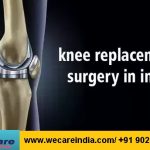STROKE SURGERY
Stroke is a brain attack. It is much like a heart attack, only it occurs in the brain. Like a heart attack, stroke is a medical emergency. Do not wait or hesitate to call for emergency medical help. Fast treatment makes a big difference in outcome for someone having a stroke.
Stroke Causes
Of the 2 main types of stroke, the ischemic stroke occurs 80-85% of the time. With an ischemic stroke, a blood vessel in the brain becomes clogged. With a hemorrhagic stroke, a blood vessel in the brain actually bursts or leaks.
Hemorrhagic stroke Surgery in india
Hemorrhagic strokes tend to be more serious. The distinction between type of stroke can be critical in determining the treatment used.
- Ischemic strokes occur when a blood vessel gets so narrow or clogged that not enough blood can get through to keep the brain cells alive.
- Hemorrhagic strokes occur when the wall of a blood vessel becomes weak and blood leaks out into the brain.
Early treatment can help minimize damage to brain tissue and improve the outcome (prognosis). Treatment depends on whether the stroke is ischemic or hemorrhagic and on the underlying cause of the condition. The long-term goals of treatment include rehabilitation and prevention of additional strokes.
Initial treatment for hemorrhagic stroke is difficult. Efforts are made to control bleeding, reduce pressure in the brain, and stabilize vital signs, especially blood pressure.
- There are few medicines available to treat hemorrhagic stroke. In some cases, medicines may be given to control blood pressure, brain swelling, blood sugar levels, fever, and seizures. You will be closely monitored for signs of increased pressure on the brain, such as restlessness, confusion, difficulty following commands, and headache. Other measures will be taken to keep you from straining from excessive coughing, vomiting, or lifting, or straining to pass stool or change position.
- Surgery generally is not used to control mild to moderate bleeding resulting from a hemorrhagic stroke. But if a large amount of bleeding has occurred and the person is rapidly getting worse, surgery may be needed to remove the blood that has built up inside the brain and to lower pressure inside the head.
Ischemic Stroke Surgery in india
Initial treatment for ischemic stroke involves removing the blockage and restoring blood flow. Tissue plasminogen activator (t-PA) is a medication that can break up blood clots and restore blood flow when administered within 3 hours of the event. This medication carries a risk for increased intracranial hemorrhage and is not used for hemorrhagic stroke. Mannitol, a diuretic, may be administered intravenously (through an IV) to reduce intracranial pressure during an ischemic stroke.
Treatment of Stroke in india:

Treating a stroke depends on where the stroke occurred in your brain and whether it’s ischemic or hemorrhagic. The doctor may use a magnetic resonance imaging (MRI) scan, computed tomography (CT) imaging or angiography (injecting dye through a catheter inserted into the suspected blocked blood vessel and taking x-rays of the vessels) to determine the stroke type and location.
Time is critical. Until a few years ago, strokes were regarded as untreatable. Brain cells were thought to die within minutes after a stroke began, so stroke treatment was believed useless. The only onsite medical treatment is stabilization and “wait and see.” Now researchers have discovered that some brain cells die immediately after a stroke, but others can survive for as long as several days. It is now clear that treatment following a stroke, especially if begun within three hours of onset, can help preserve brain tissue.















